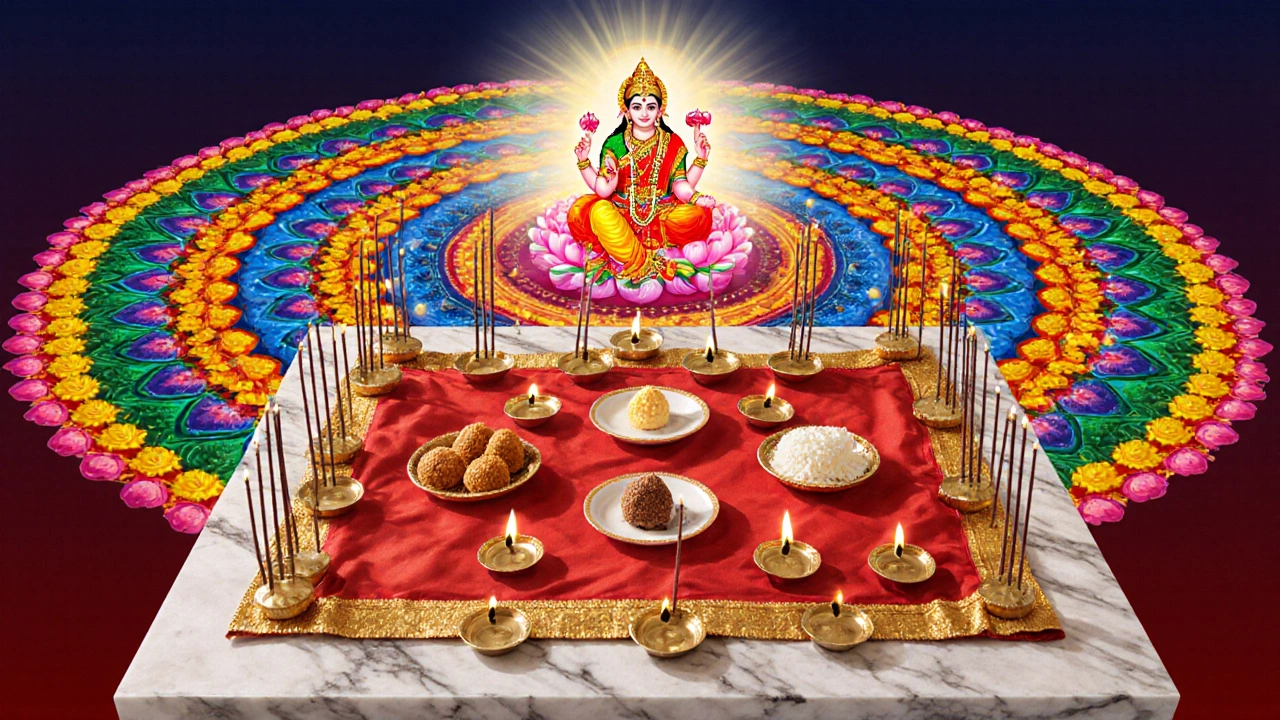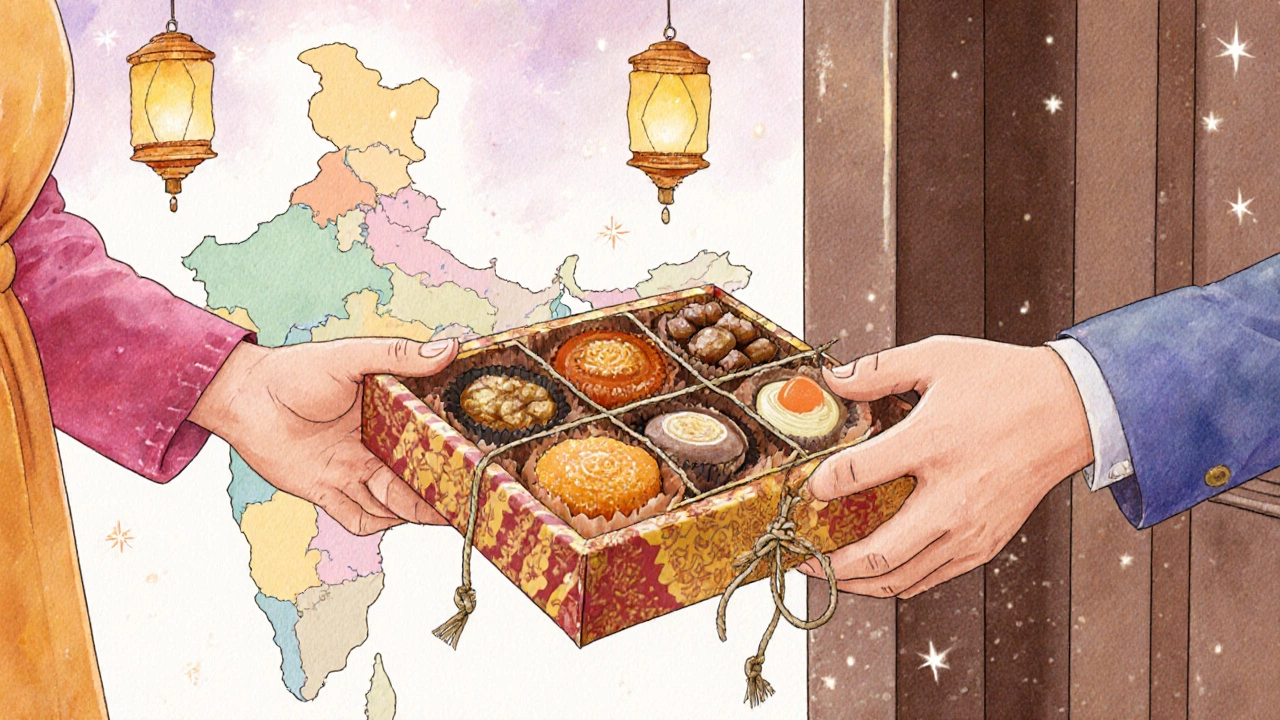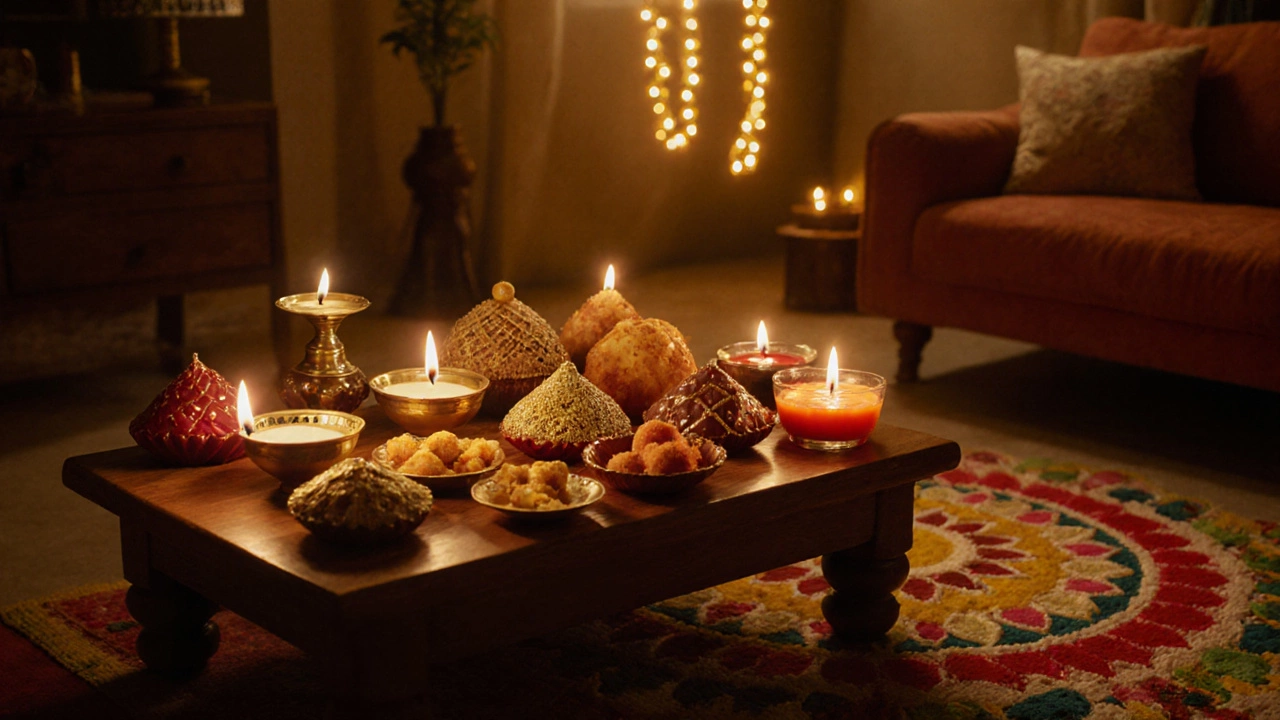When families gather for Diwali, the festival of lights, the first thing you notice is the colorful spread of sweets on every table. But why do we hand out sweets at this time? Let’s explore the history, the religious meaning, and the modern practice behind this sweet tradition.
Historical roots of gifting sweets
Giving sweets during Diwali dates back to ancient Vedic rituals. Early harvest festivals celebrated the abundance of crops, and honey‑laden treats were offered to the gods as thanks for a good yield. Over centuries, these offerings turned into Diwali sweets tradition, symbolising gratitude and the wish to share prosperity with friends and family.
Religious significance - why gods love sweets
The Hindu goddess Lakshmi is the deity of wealth and prosperity. Legend says she appears on the night of Diwali, drawn to homes that shine with oil lamps and are fragrant with the aroma of sweets. By preparing and sharing Mithai (Indian sweets), devotees create a welcoming environment for Lakshmi.
Another beloved deity, Ganesha, is invoked at the start of any new venture. Offering sweets to Ganesha is believed to remove obstacles and bring luck for the coming year.
Social customs - sweets as a language of love
In Indian culture, food is a primary way of expressing affection. Sweet dishes carry a universal message: "I wish you happiness." During Diwali, families exchange sweets with neighbors, colleagues, and distant relatives, reinforcing social bonds that might otherwise wane over the year.
When a child receives a box of Ladoo or Kaju Katli, it’s not just a treat - it’s a tangible reminder that the community cares.

Regional varieties - a sweet map of India
Every Indian state boasts its own signature Diwali sweet. Below is a quick guide that shows how geography shapes flavor:
| Sweet | Key Ingredient | Origin State | Typical Sweetness Level |
|---|---|---|---|
| Kaju Katli | Cashew paste | Uttar Pradesh | Medium |
| Ladoo (Besan) | Gram flour | Gujarat | Low‑Medium |
| Soan Papdi | Sugar & flour | Maharashtra | High |
| Halwa (Suji) | Semolina | Punjab | Medium |
| Puran Poli | Jaggery & lentils | Maharashtra/Karnataka | Medium |
| Gulab Jamun | Milk solids | All India | High |
| Saffron Kheer | Rice & saffron | West Bengal | Low‑Medium |
These sweets are more than just desserts - they narrate local customs, seasonal produce, and historical trade routes.
How sweets are used in rituals
During the Lakshmi puja, a small portion of each sweet is placed on the altar as Prasad. After the prayers, the blessed sweets are distributed to attendees, symbolising the sharing of divine blessings.
Many families also prepare a Rangoli at the entrance, then lay sweets nearby. The bright colours of the rangoli combined with the perfume of ghee‑fried sweets invite both guests and deities into the home.
Modern twists - from homemade to store‑bought
Urban lifestyles have shifted many families from kitchen‑made mithai to ready‑made packets from trusted brands. While the essence remains - gifting joy - the convenience factor has grown. Today, you’ll find DIY sweet kits, online ordering, and even sugar‑free versions to cater to health‑concerned consumers.

Tips for choosing and gifting sweets
- Know the recipient’s palate: Some prefer nut‑based treats like Kaju Katli, while others love the melt‑in‑the‑mouth texture of Soan Papdi.
- Check freshness dates: Many sweets contain dairy; a short shelf‑life means buying close to the festival.
- Go regional if possible: Sending a box of Puran Poli to a friend in Mumbai adds a personal, cultural touch.
- Wrap beautifully: Traditional paper boxes, colored ribbons, or even eco‑friendly jute bags enhance the gifting experience.
Quick checklist for a sweet Diwali
- Plan the variety - at least three textures (crunchy, soft, syrupy).
- Buy or prepare sweets at least a week before Diwali.
- Set aside a small portion for Prasad.
- Package sweets in decorative containers.
- Deliver them with a warm wish and a handwritten note.
Frequently Asked Questions
Why are sweets specifically associated with Diwali and not other festivals?
Diwali marks the return of prosperity (Lakshmi) and the triumph of light over darkness. Sweet dishes, being rich and festive, naturally embody the joy and abundance celebrated on this night.
Can I give store‑bought sweets as Prasad?
Yes. As long as the sweets are fresh and prepared with clean ingredients, they are acceptable for Prasad. Many temples also receive packaged sweets during the season.
What are some healthy alternatives for Diwali gifting?
Look for sugar‑free laddoo made with dates, low‑fat roasted nuts, or fruit‑based burfi. These keep the festive feel while reducing added sugars.
How long do homemade sweets stay good?
Most dry sweets like Kaju Katli or Soan Papdi last 2‑3 weeks if stored in airtight containers. Moist sweets such as Gulab Jamun should be consumed within 5‑7 days.
Is it necessary to give sweets to everyone during Diwali?
It’s a cultural nicety, not a strict rule. Sharing sweets with close family and neighbours strengthens community ties, but you can choose to give gifts that feel right for your relationships.
Whether you bake at home or shop online, the act of sharing sweets during Diwali carries a timeless message: prosperity, gratitude, and togetherness. So, this year, pick a few favorite treats, wrap them with love, and let the sweetness travel from your home to yours.
